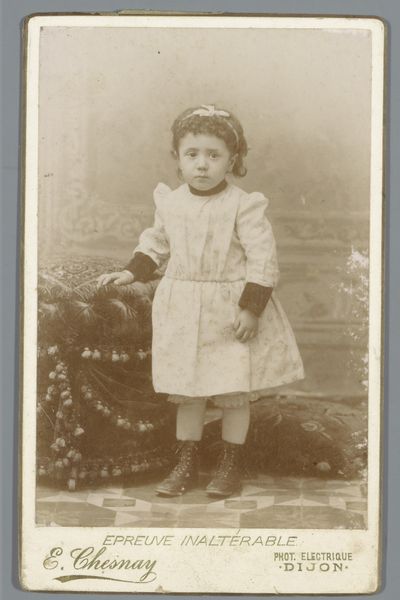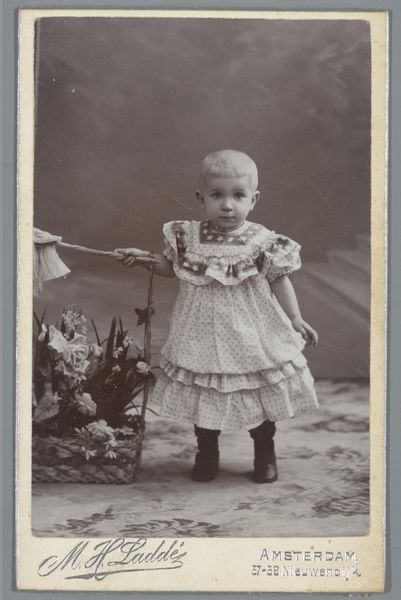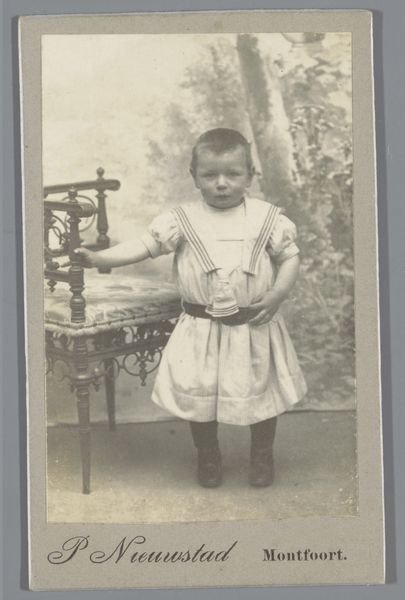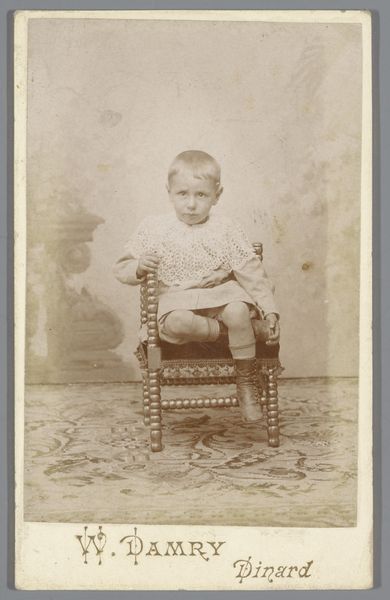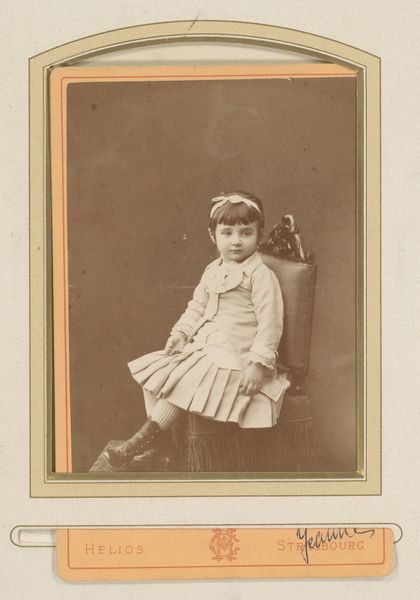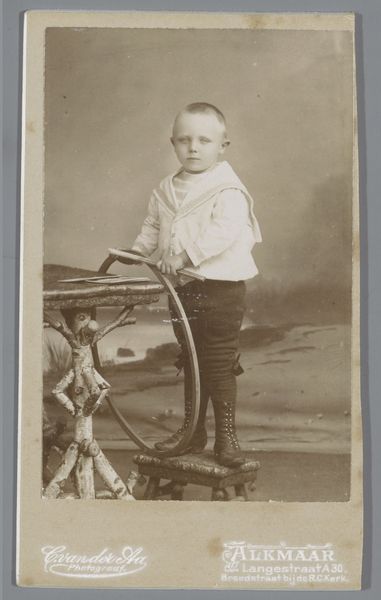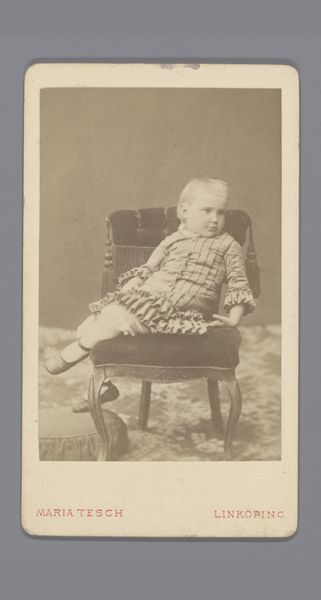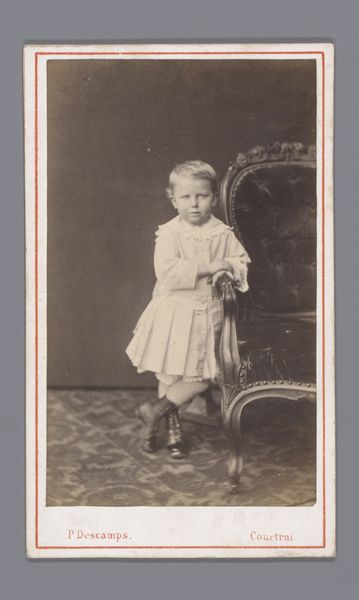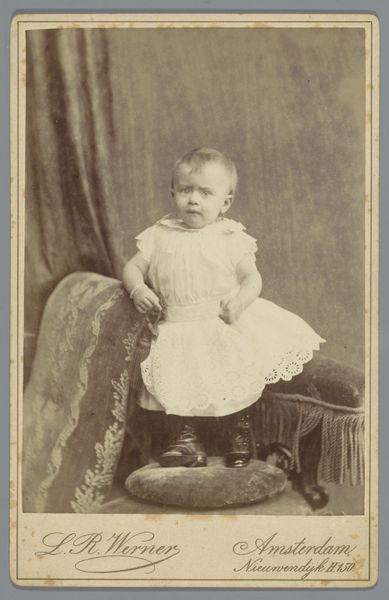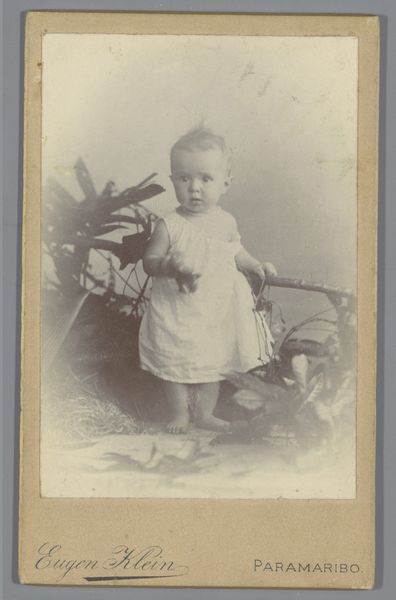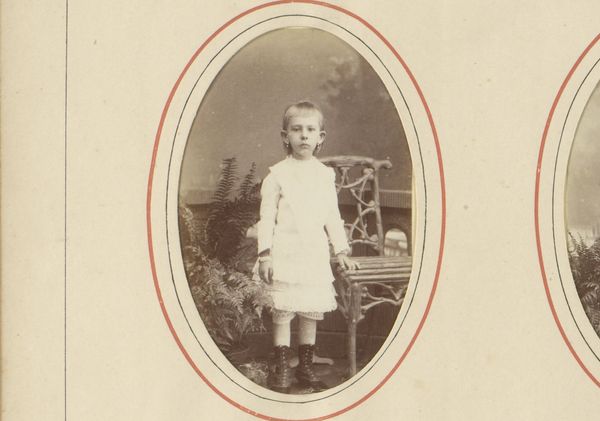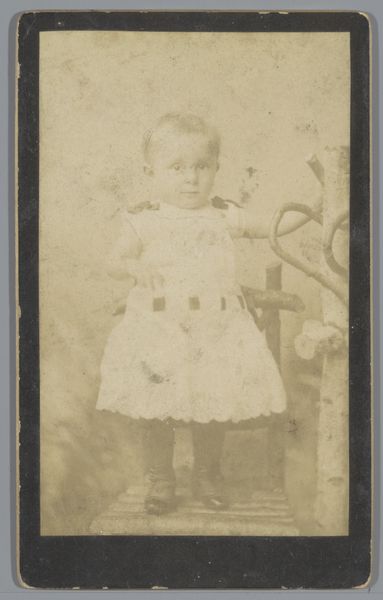
photography, albumen-print
#
portrait
#
photography
#
coloured pencil
#
genre-painting
#
albumen-print
Dimensions: height 105 mm, width 65 mm
Copyright: Rijks Museum: Open Domain
Walter Damry made this carte-de-visite of an unknown boy sometime in the late 19th century, using photographic chemicals and paper. While it may seem simple now, photography was once a labor-intensive process that involved coating glass plates with light-sensitive emulsions, exposing them in a camera, and then developing them in a darkroom. The resulting images were often printed on paper and mounted on cards like this one. Damry was running a commercial studio, so this boy’s family would have been paying for a material demonstration of their social status. The photograph's sepia tone and soft focus give it a nostalgic feel, while the boy's formal attire and pose suggest a sense of self-importance, made all the more precious by the evident skill and care of Damry's technique. This small, mass-produced image thus encapsulates the complex relationship between art, craft, and commerce in the 19th century.
Comments
No comments
Be the first to comment and join the conversation on the ultimate creative platform.
